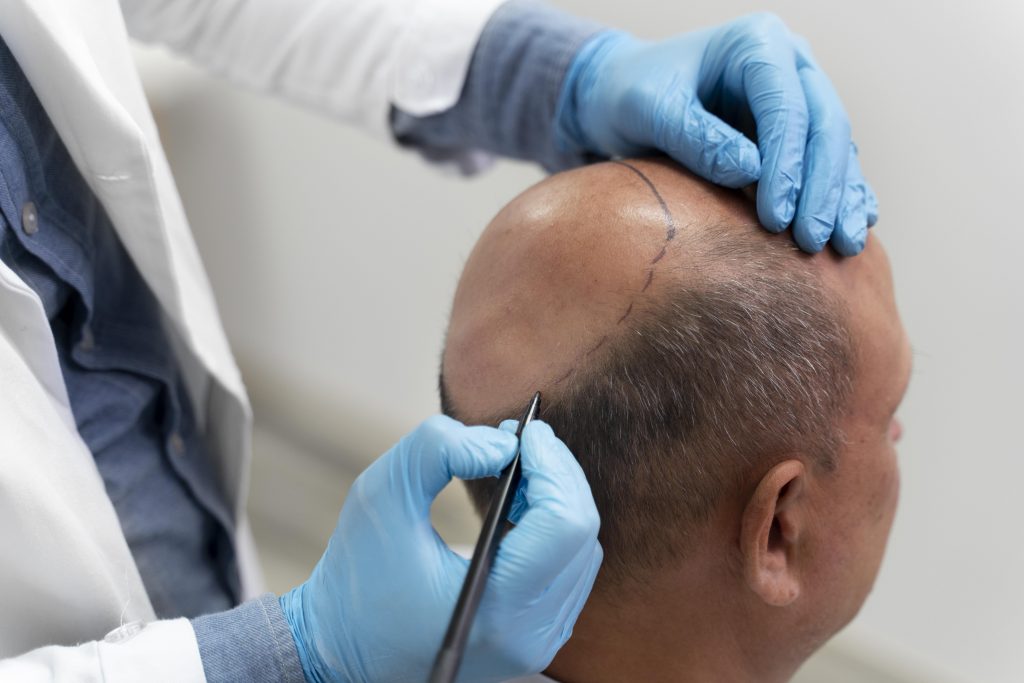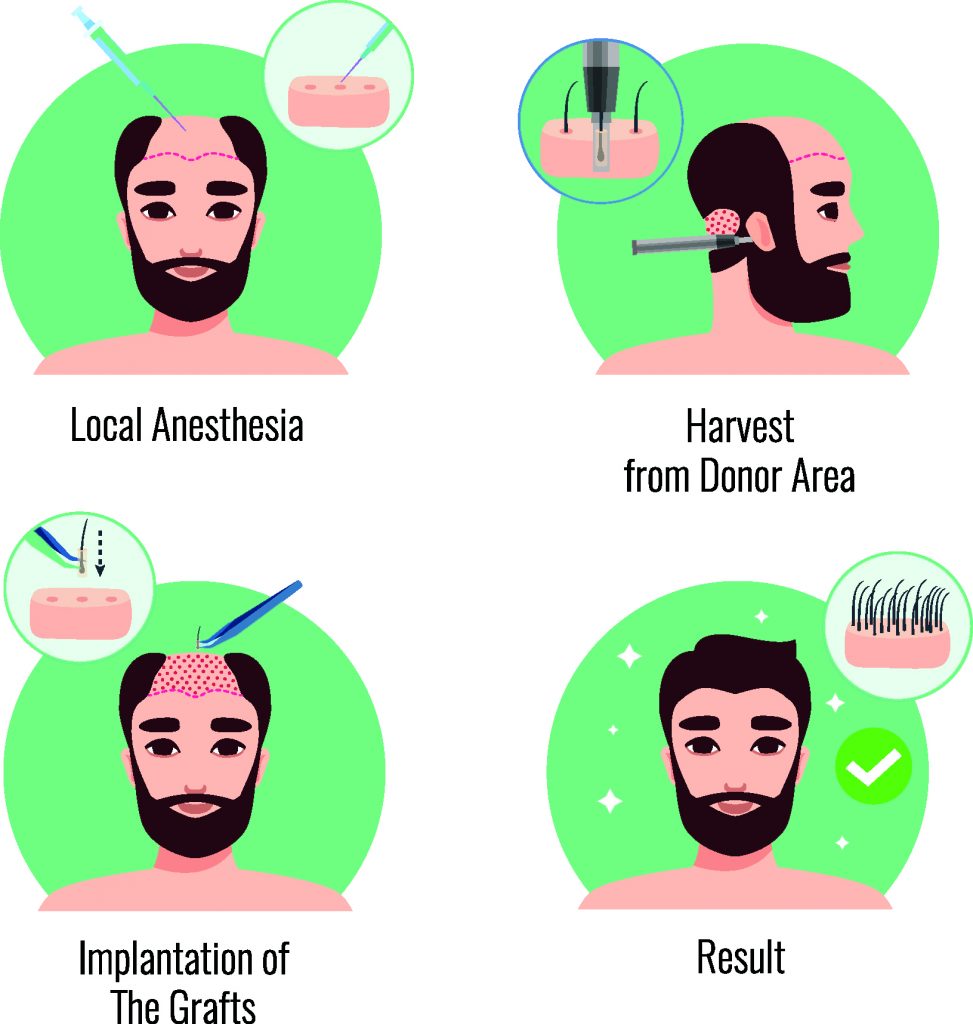
Hair transplantation methods are used to treat the hairfall or hair loss in men and women. There can be numerous reasons for hair loss which must be taken care of to prevent hairfall/hair loss from an early stage. Some of the reasons have been listed below
What is Hair transplantation?
Hair transplantation is a medical procedure that involves removing hair follicles from one region of the body (the donor site) and transplanting them to a bald or balding part of the body (the recipient site). Male pattern baldness is the most common condition treated with this method.
By imitating original hair direction, modern hair transplantation can produce a natural appearance. Follicular unit transplantation is the name given to this hair transplant surgery (FUT).
Strip harvesting and follicular unit extraction are two methods for obtaining donor hair (FUE).
What is FUE Hair Transplant?
If you have ever researched hair transplant procedures, you’ve probably seen the FUE acronym a lot. The term FUE stands for Follicular Unit Extraction, one of the most advanced hair transplant methods used by hair transplant surgeons to extract hair follicles one-by-one from one part of the scalp and implant it onto a balding area.
A large number of people over the world have been known to experience amazing results after undergoing the FUE hair transplant, making it one of the most sought-after procedures to combat baldness. FUE hair transplant is infact more popular than FUT (Follicular Unit Transplant) hair transplant.

How does FUE Hair Transplant work?
During the hair implantation technique, patients are given anaesthesia while the hair transplant surgeon transfers healthy hair from the donor area using a specialized extraction instrument and implants the regenerative hair using a powerful stereo microscope in groups of one to four hairs onto the balding areas.
Each hair follicle is extracted individually which makes the FUE hair transplant procedure last for 3 or 4 sessions. Once the entire extraction procedure is completed, the hair follicles are not immediately implanted but are placed in a holding solution that contains growth factors and healing properties. The balding area is numbed before the grafting session begins and is done to minimize discomfort and trauma.

Advantages of FUE
- Since we take a lot of care during the extraction and implantation of the grafts, there is no harm to the patient. We utilize no synthetic compounds or outer drugs in the impacted region. Accordingly, the wellbeing factor is a lot higher.
- As we take the transplanted hair from the patient’s scalp there is no variety in shading or surface of hair.There is no scar left on the removed and embedded region. The hair seems normal and gives a sure, alluring care for the transplantation.
- As we support the grafts prior to embedding, the patients begin obtain results toward the finish of third month itself. Our patients are cheerful and fulfilled as they can see the ideal outcome inside 6 to 7 months, of the medical procedure. Consequently, it is a more dependable, long-lasting, and normal looking answer for hair issues.
What is FUT Hair Transplant?
The FUT (Follicular Unit Transplant) technique follows a traditional pattern when transferring hair follicles. Unlike in electronics, the latest is not always the best. As far as hair transplant techniques are concerned, results matter the most. A hair transplant surgeon can take around 4 and 8 hours. FUT is generally quicker than FUE surgery.
Having brought about a breakthrough in the strip technique, the FUT Hair Transplant is, in fact, an evolution of the Punch Graft technique. Modern hair transplant techniques paired with FUT hair transplant technique forms the basis for a successful hair restoration treatment.
Advantages of FUT
- FUT (Follicular Unit Transplant) is a high advanced hair transplant strategy.
- We can collect and transplant a larger number of grafts per session than some other strategy.
- We don’t have to manage the hair like we need to in the immediate FUE system.

